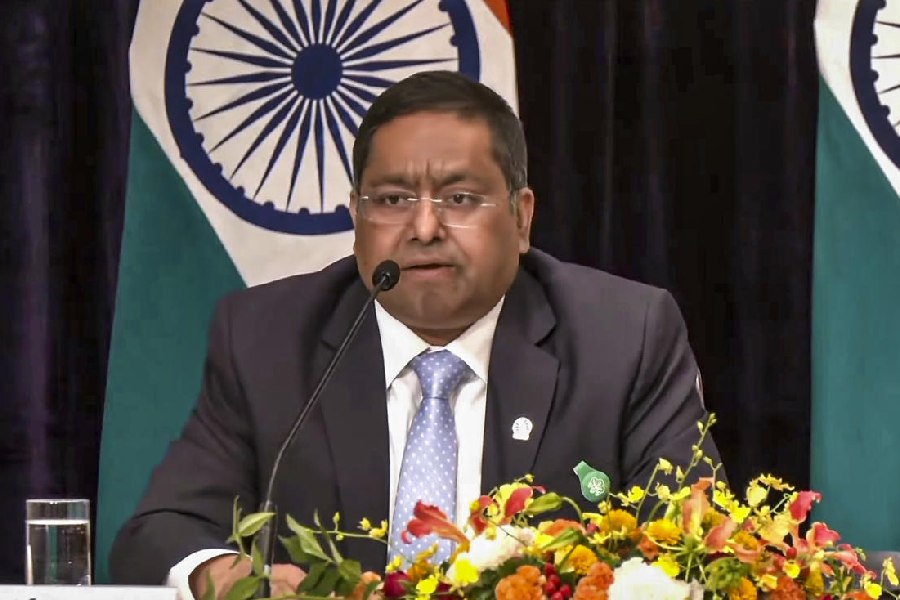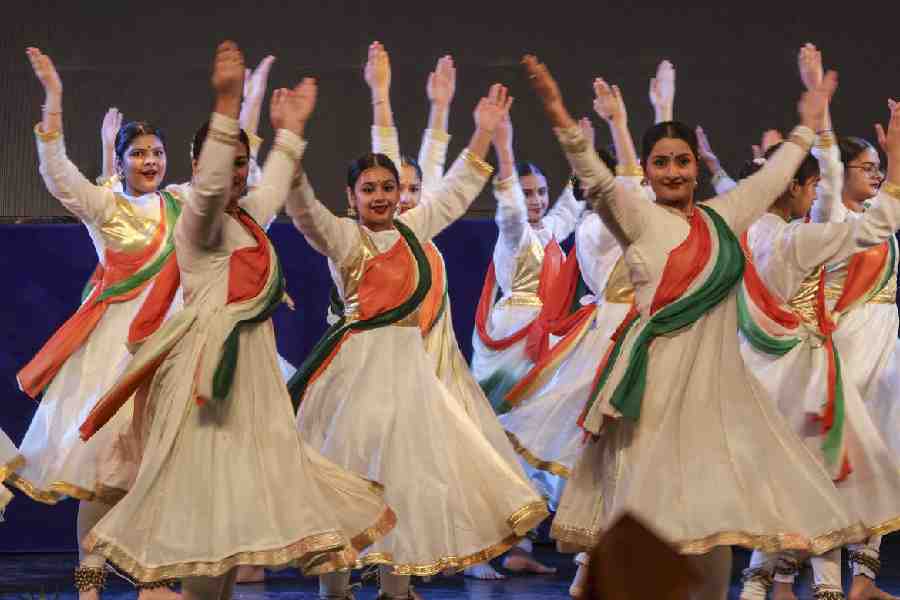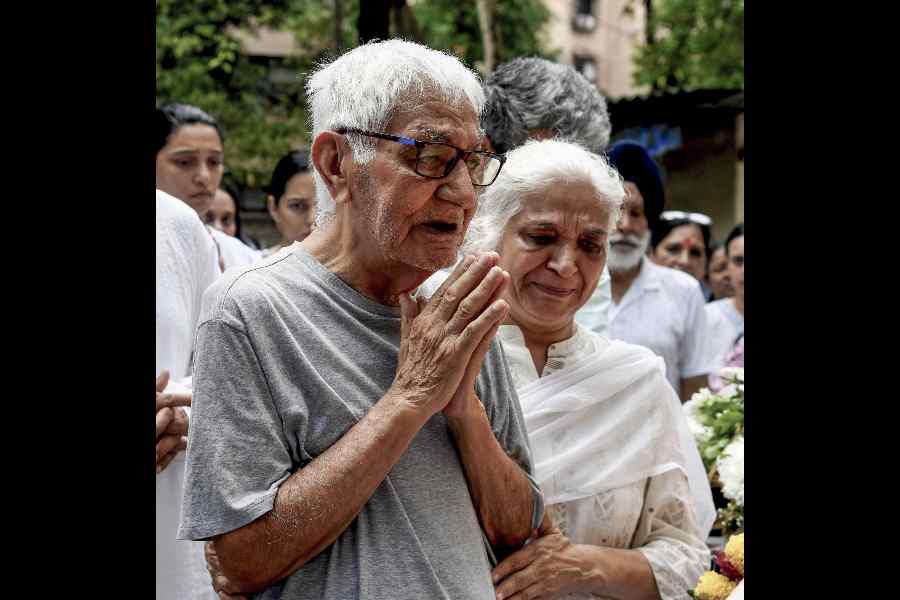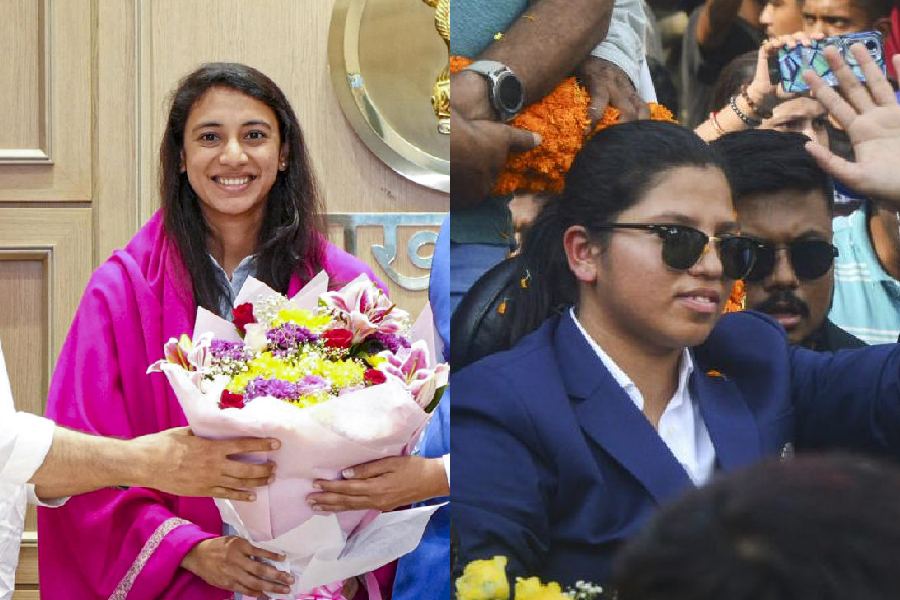Satyajit Ray had cast Amjad Khan on the strength of his performance in Sholay. The legendary filmmaker, in a 1983 interview, had said that he had seen the film in Bombay in the first week of its release.
“Very able, very competent film though pretty low on artistic content,” was his assessment.
Ramesh Sippy, the maker of Sholay, which has since become a milestone in Indian cinema, was the speaker invited this year to deliver the Satyajit Ray Memorial Lecture.
Although at the inauguration of the festival on Thursday, he had mentioned Bengali cinema, including Ray’s, as a major influence on his craft, teaching him how to balance good cinema and commerce, on Friday Sippy chose to restrict his lecture to the making of Sholay, which turns 50 this year.
“Sholay started with a four-line idea on two crooks and a retired army man. We changed it to a policeman as otherwise we would have had to take permission (from the army) at every step,” he said.
His inspirations came from a clutch of Hollywood films like Mackenna’s Gold, Butch Cassidy and the Sundance Kid as well as The Magnificent Seven. “I saw (Akira) Kurosawa’s Seven Samurai (which inspired The Magnificent Seven) much later.”
Gabbar, in Sippy’s mind, was an impulsive person — “smiling in one moment and lambasting in the next”.
“Once I shared my thoughts, Javed Akhtar (of the Salim-Javed scriptwriter duo) wrote a scene and came back. I knew that he had caught exactly what I wanted.”
Speaking of casting challenges, he recalled Dharmendra being undecided about which role to do on reading the script and being offered Veeru.
“’Let me do Thakur saab’s role. Kahani toh unka hai,’ he had said at first. Gabbar, too, appealed to him. 'How can you play a villain!’ I said to dissuade him. The card that Sippy played lightheartedly, pointing out that it would be Veeru who would get Hema Malini, finally made him agree to settle for the role Sippy had in mind for him.
Hema, too, did a stellar turn as the talkative Basanti. “She had done Andaaz and Seeta aur Geeta. In fact, she had been unsure about playing (a double role) Seeta aur Geeta but took courage from my faith in her and went ahead.”
Such was her commitment that when shooting started, she could rattle off her lines at a faster pace than Sippy himself could.
Asrani, who recently passed away, had appeared briefly in Sippy’s earlier film, Seeta aur Geeta, as a doctor called for a delivery. “And what a fabulous job he did as Angrezon ke zamane ka jailor in Sholay.” Sachin Pilgaonkar, he pointed out, too, had played a bit role as the priest’s son.
The first shot to be canned was Jai returning the keys to Radha while the first big sequence was the massacre of Thakur’s family. But it was the lantern shot (where Jaya Bachchan lights a lantern at the fall of dusk as Amitabh Bachchan plays a plaintive tune on the mouth organ downstairs) that proved the most challenging.
“We could shoot just one take every day at that hour. So we would start preparing from 2pm, set up the lights, rehearse and shoot at 5.45pm. If we were off schedule by even a few minutes, the effect would not be the same. It took us 15-20 days to get it right,” he recalled.
With modern technology, he admitted, much could be done in post-production. But things were different in those days.
In contrast, Basanti’s dance sequence was canned in four days.
The man, who first walked into the sets of his father (producer-director G.P. Sippy)’s film at the age of seven and got fascinated, is now 78.
Addressing young filmmakers, he urged them to make “good entertaining powerful cinema”, the kind that “combines art and commerce”.












